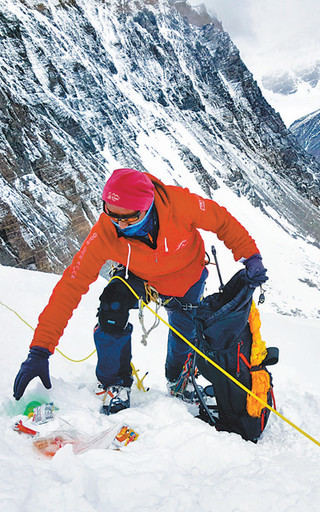
Ban on tourist in core zone of Mt. Qomolangma an effective measure to protect ecology: environmental authority

The recent ban on tourists entering the core zone of Mt.Qomolangma National Nature Reserve is an effective measure to protect the ecology of the world’s highest mountain, as tourism is expanding fast there, said Liu Youbin, spokesperson of China’s Ministry of Ecology and Environment on Feb. 28. The ban has been a hot issue recently. Liu noted that it conforms to China’s regulation on natural reserves, and is a laudable policy.
Last December, relevant departments of the Tibet Autonomous Region announced to ban all entrances to the core zone above Rongpo Monastery in the reserve, which is around 5,000 meters above sea level, in an attempt to implement the “Green Shield” campaign on nature reserves, and to protect ecology in a practical manner. Kelsang, deputy director of the reserve’s administration introduced that the ban would not affect visitors sightseeing as a new tent camp would be set up nearly two kilometers away from the original one, from which the Mt.Qomolangma and its peak could be clearly watched. As the world’s highest mountain, Mount Qomolangma attracts a large number of visitors and mountaineering enthusiasts. Around 50,000 people visited the mountain annually before 2015, and the figure mounted to 140,000 last year. Because of the increasing human activities, the environmental carrying capacity of the ecologically vulnerable Mt.Qomolangma was once reaching the peak.
During the spring climbing season in 2018, the region’s sports bureau carried out large-scale trash cleanup activities at the Base Camp and areas above, removing 8.4 metric tons of waste of garbage and excrement. Liu introduced that environmental departments have enhanced routine inspection at the reserve, and organized environmental rectification at tourist attractions below the altitude of 5,200 meters. Special teams were launched to carry out cleanups at altitudes above 5,200 meters last year. They also improved infrastructure, setting up bins and toilets from the north gate of the reserve to the Base Camp. According to Tibet Sports Bureau, regulations on the management of mountaineering garbage would be enacted. Spring would become the only period of the year for the reserve to receive tourists, and the total number of people engaged in mountaineering would be reduced to around 300, in a bid to lower ecological impact on Mount Qomolangma.
By Bai Yang
(People’s Daily)


